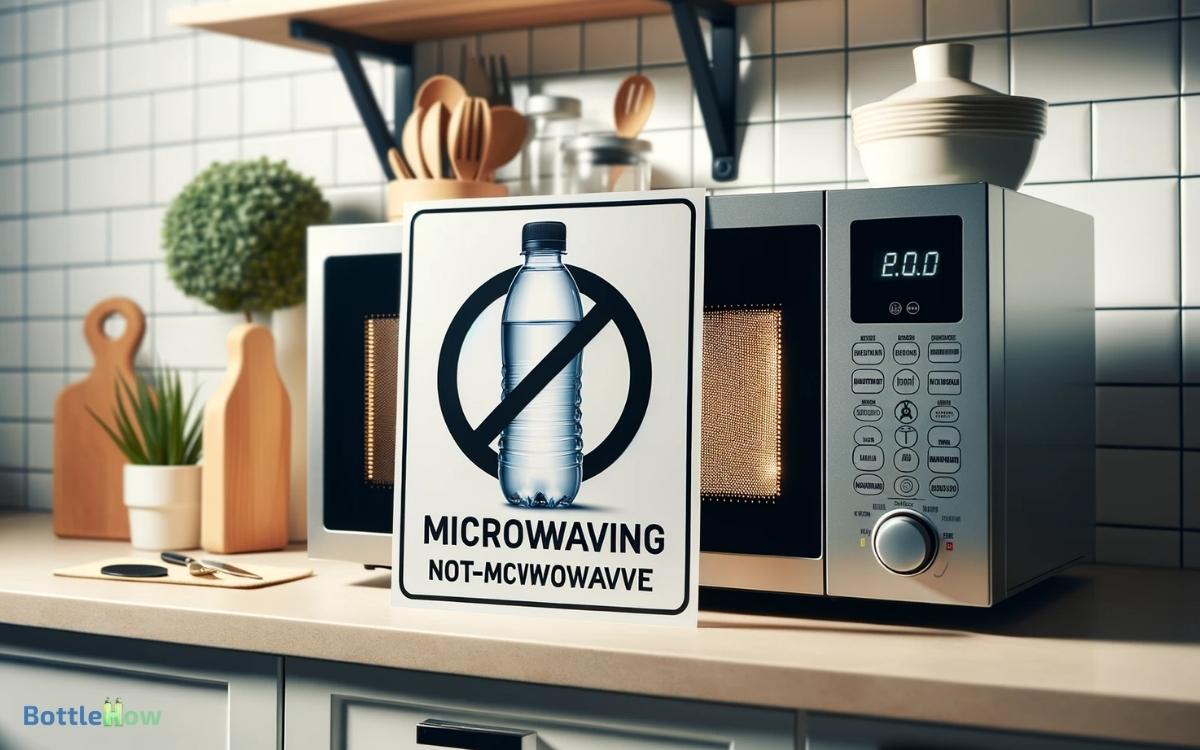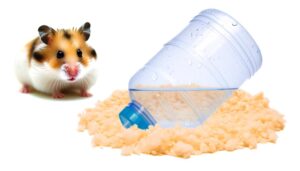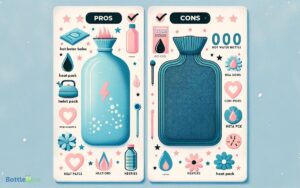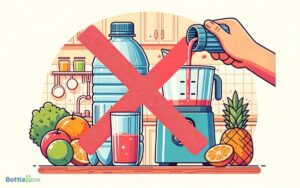Can You Microwave a Water Bottle? No!
Microwaving a water bottle isn’t safe due to potential dangers like chemical leaching and explosions. Plastics can release harmful substances, especially those without ‘microwave-safe’ labels.
Glass bottles are generally safer, but never use stainless steel as it can damage your microwave. Silicone bottles can be microwave-safe but always check manufacturer guidelines. Uneven heating might create hot spots, risking burns.
For safer alternatives, use a kettle or stove to heat water before transferring it to your bottle. Discover how to avoid these risks and learn safer methods by continuing to explore your options.

Key Takeaways
Potential Dangers
Microwaving a water bottle can pose several potential dangers, ranging from chemical leaching to the risk of burns and explosions.
When you heat a water bottle, the plastic can degrade, releasing harmful chemicals into the water. These chemicals, such as BPA and phthalates, can have adverse health effects.
Additionally, microwaving can cause uneven heating, creating hot spots that might burn you when you touch or drink from the bottle.
There’s also the risk that pressure buildup inside the bottle could cause it to burst, leading to potentially severe injuries.
Bottle Materials
Understanding the significant dangers associated with microwaving, it’s crucial to grasp the different materials used in water bottles and their properties.
Plastic bottles are common but can release harmful chemicals when heated. Look for labels indicating ‘microwave-safe‘ if you must use plastic.
Glass bottles are generally safe for microwaving but can shatter if exposed to sudden temperature changes.
Stainless steel bottles should never be microwaved as they can cause sparks and damage the appliance.
Finally, silicone bottles are flexible and often microwave-safe, but always check the manufacturer’s guidelines.
Being aware of these materials helps you make informed decisions, ensuring your safety when considering microwaving a water bottle.
Microwave Safety
Guaranteeing microwave safety begins with understanding the appliance’s limitations and the risks involved.
Microwaves operate by emitting electromagnetic waves that heat water molecules in food and liquids. Not all containers are microwave-safe; some may melt, warp, or leach harmful chemicals.
Always check if your water bottle is labeled as microwave-safe. Even with proper materials, overheating can cause the bottle to burst or the liquid to reach dangerous temperatures. Never microwave a sealed bottle, as pressure can build up, leading to explosions.
Be cautious of uneven heating, which can result in hot spots that might cause burns. Always use microwave-safe containers and follow manufacturer guidelines to ensure a safe experience.
Alternatives to Microwaving
There are several safer and more reliable methods to heat water in a bottle without using a microwave. One option is to use a kettle to heat the water before carefully pouring it into the bottle. Another safe method is to place the bottle in a pot of warm water and gradually heat it on the stove. If you’re wondering, can you microwave a hot water bottle, it’s generally not recommended, as the heat may cause the bottle to warp or leak.
One effective approach is to use a kettle. Boil the water separately and then carefully pour it into the bottle. This method guarantees even heating and reduces the risk of plastic degradation.
Another option is to use a stovetop pot. Heat the water in the pot and then transfer it to the bottle. For those with a hot water dispenser, this is a convenient and quick alternative.
Always make sure the bottle you’re using can withstand the temperature of the heated water to avoid any potential hazards. These methods provide safer ways to heat water without the risks associated with microwaving.
Expert Opinions
It’s important to take into account expert opinions on potential health risks and the safety of bottle materials when microwaving a water bottle. Specialists highlight that certain plastics may release harmful chemicals when heated.
Additionally, experts caution that even microwave-safe labels don’t guarantee safety under all conditions.
Potential Health Risks
Experts caution that microwaving plastic water bottles can release harmful chemicals into the water, posing potential health risks.
When you heat plastic, it can leach substances like BPA and phthalates, which are linked to various health issues.
These chemicals can disrupt endocrine functions and may contribute to hormonal imbalances, reproductive problems, and even certain cancers. Hence, it’s important to understand the risks and potential consequences.
| Chemical | Potential Health Risk |
|---|---|
| BPA | Hormonal imbalances, reproductive issues |
| Phthalates | Endocrine disruption, developmental issues |
| Dioxins | Cancer, immune system damage |
| Styrene | Neurological problems, hearing loss |
| Antimony | Respiratory issues, skin irritation |
Bottle Material Safety
Given these health risks, understanding which bottle materials are safe for microwaving becomes crucial.
Experts generally advise against microwaving plastic bottles, especially those not labeled ‘microwave-safe.’ Many plastics can leach harmful chemicals like BPA when heated.
Instead, opt for glass or microwave-safe ceramics, which don’t pose the same risk. If you’re considering microwaving a water bottle, look for explicit microwave-safe labels.
Stainless steel bottles are also a no-go since they can cause sparks and potentially damage your microwave.
Always read manufacturer guidelines to guarantee safety. When in doubt, transfer your water to a microwave-safe container before heating.
Your health and safety depend on these cautious steps, so don’t overlook the importance of proper bottle material selection.
Safe Heating Methods
When contemplating safe heating methods for a water bottle, it’s essential to understand the specific materials and microwave compatibility involved.
Not all water bottles are suitable for microwave use, and heating the wrong type can be hazardous.
| Material Type | Microwave Safe? |
|---|---|
| Plastic (BPA-free) | Usually, check label |
| Stainless Steel | No |
| Glass | Yes, if labeled microwave-safe |
| Aluminum | No |
If your bottle is microwave-safe, remove the cap to prevent pressure build-up. Heat in short intervals (20-30 seconds) and shake gently to distribute heat evenly.
Always read the manufacturer’s instructions. If you’re unsure about the material, opt for alternative heating methods like a stovetop kettle, which ensures safety and avoids potential damage.
Conclusion
Ultimately, microwaving a water bottle poses potential perils. Plastic may melt, and hazardous chemicals could leach into your liquid. Instead, opt for safer solutions like using a microwave-safe container.
Remember, respecting recommended practices guarantees safety. Experts echo these sentiments, emphasizing caution and care. For warmth without worry, consider alternatives such as kettle-boiled water or a heat-safe mug.
Prioritizing proper procedures protects both your health and home. So, skip the microwave mishaps and stay safe!





